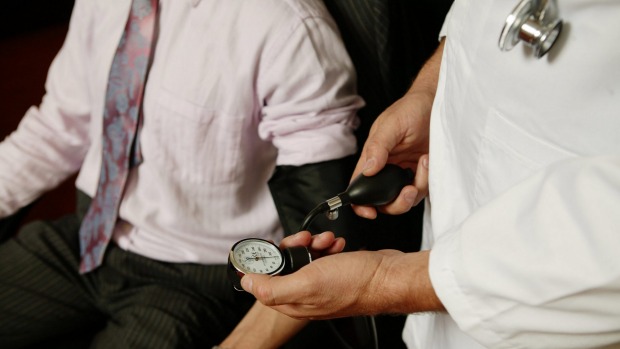
Canberra’s two federal electorates have the lowest percentage of bulk-billed GP appointments in Australia, according to data released by federal Assistant Health Minister Fiona Nash.
In some cases, the rate of bulk-billed appointments in Canberra is 40-50 per cent less than some Sydney suburbs represented by government ministers and senior opposition figures.
A total of 905,620 services were provided by GPs in the Fraser electorate during 2014 with 553,358 appointments bulk billed, or 61.1 per cent.
The number of appointments bulk-billed in the seat of Canberra was even lower at 53.7 per cent of 827,514 presentations.
The data, tendered after questioning by Tasmanian Senator Carol Brown, revealed more than 98 per cent of GP visits in the NSW electorates of Blaxland, Chifley, McMahon and Watson were bulk billed.
The bellwether electorate of Eden-Monaro performed slightly better than Canberra at 69 per cent while Higgins and Kooyong in Melbourne’s east both recorded a lowly 63 per cent.
Poor access to GP bulk-billing has been blamed for an increasing number of presentations to Canberra emergency departments, which are already struggling to care for a growing population.
A report by the Productivity Commission has found the number of GPs working the in territory has increased from 65.5 per 100,000 people in 2010-11, to 72.
ACT Australian Medical Association president Dr Elizabeth Gallagher said the lack of doctors willing to bulk bill in Canberra was a result of federal government policy.
“The bottom line is the Medicare benefits schedule has failed to keep abreast of the consumer price index,” she said.
“The cost of providing medical services is going up but the amount the government is willing to pay has not kept up with this increase.”
Ms Gallagher said the nature of Canberra’s economy and workforce also added to the problem with relatively high wages and competition from the Australian public service.
“In order to run a business you have to be able to make some money and in Canberra the costs of running a practice are really quite high with wages often above award level,” she said.
Last month, a National Health Performance Authority report found 17 per cent of Canberrans who needed to see a GP during 2013-14 did not, with many choosing to visit an emergency department instead.
Seven percent of those who delayed or avoided trips to their GP did so because of the cost, which was three times the numbers recorded in most areas of Sydney.
“Knowing most of the GPs around Canberra, I think most would be willing to bulk bill if they knew a patient could not afford to receive care,” Dr Gallagher said.
Nearly 130,000 people attended Canberra emergency departments in 2014-15. The number of presentations has increased by 22 per cent since 2009-10.
Senior doctors and the AMA have routinely called on Canberrans to avoid unnecessary trips to the emergency department with ailments or injuries that could instead be treated by a GP.
Only half of patients who visited the Canberra Hospital emergency department were seen within recommended times last financial year, with less than 40 per cent of patients categorised as urgent are treated within target times.
Opposition leader Jeremy Hanson has questioned government’s commitment to the health sector and hospitals given funding commitments for light rail.
The ACT government has committed $23 million to an extension of the Canberra Hospital emergency department, which would increase the number of beds by more than a third.
